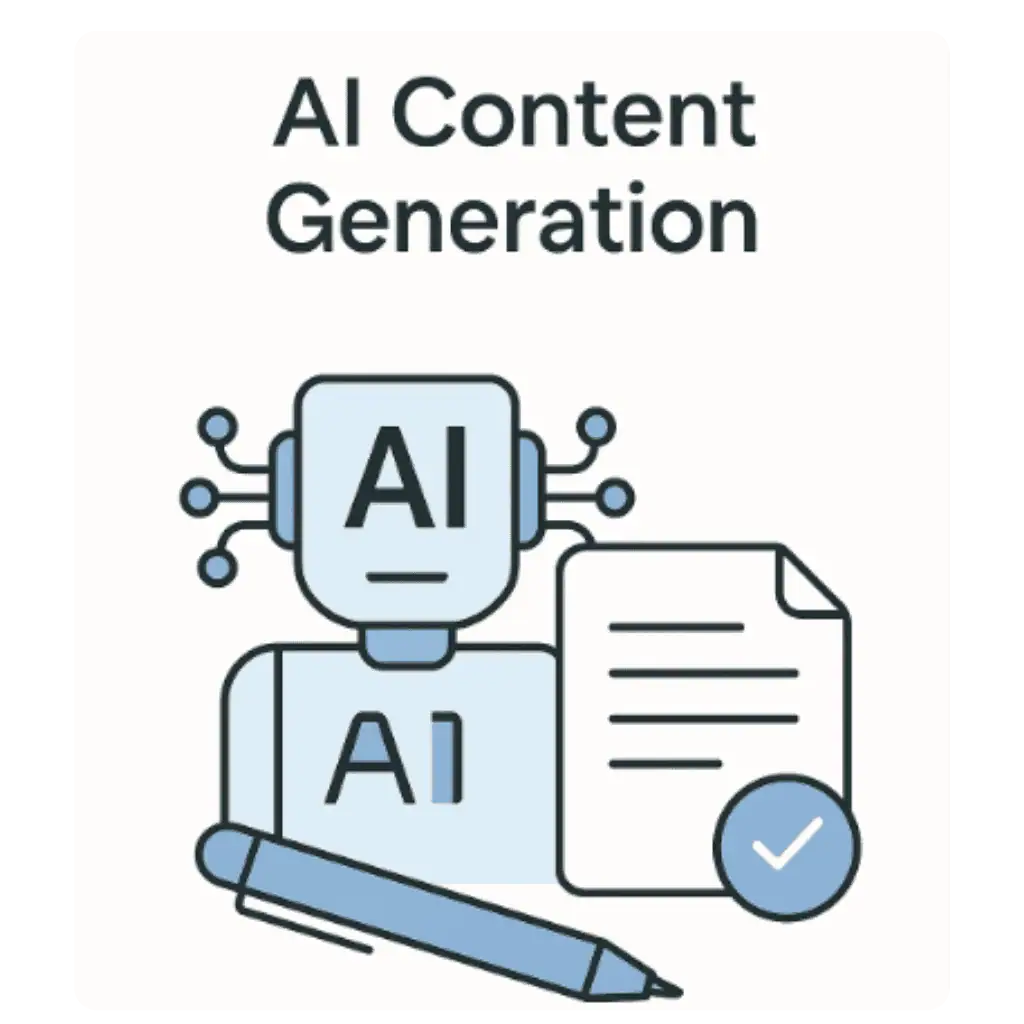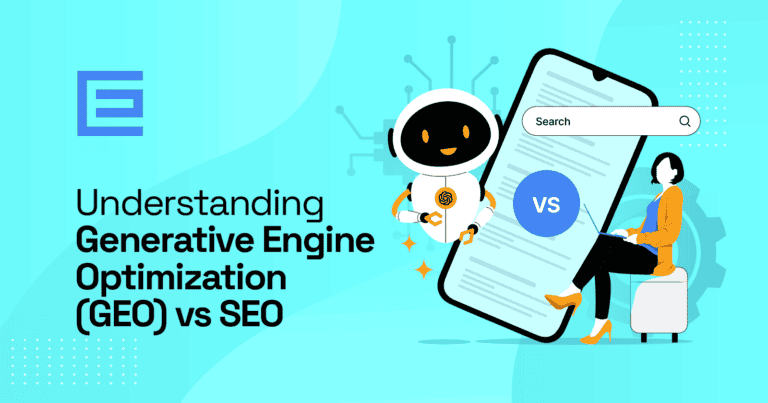Let’s face it—the SEO landscape never sits still for long. Just when you think you’ve got it figured out, Google rolls out another update that sends everyone scrambling. For small business owners trying to get more eyes on their websites, for SEO trends 2025 can feel like shooting at a moving target while blindfolded.
But here’s the good news: 2025’s SEO trends aren’t just about keeping up—they’re about getting ahead. With AI reshaping how search engines work and user experience becoming more crucial than ever, there’s actually never been a better time for small businesses to make significant gains in search rankings.
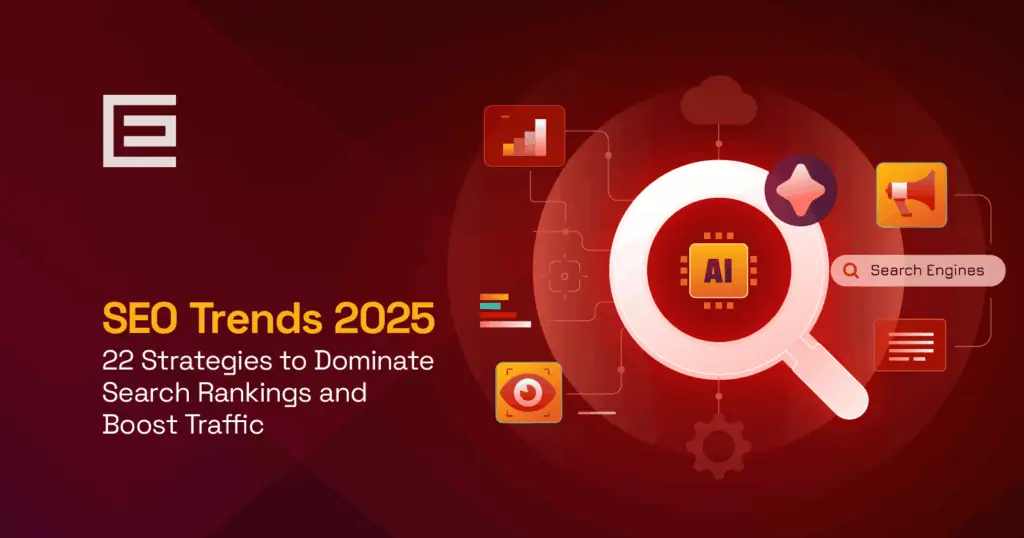
- 1 AI-Assisted Content Creation and Optimization
- 2 E-E-A-T as the Ultimate Quality Signal
- 3Core Web Vitals 2.0
- 4Zero-Click Search Optimization
- 5Voice Search and Conversational AI
- 6Video Content Dominance
- 7Topic Clusters Over Keywords
- 8Privacy-First SEO Strategies
- 9Hyperlocal Content Marketing
- 10Advanced Schema Markup Implementation
- 11Mobile-First Indexing Evolution
- 12Visual Search Optimization
- 13Predictive Search Intent Optimization
- 14User Behavior Signals as Ranking Factors
- 15Progressive Web Apps (PWAs) Integration
- 16Alternative Search Engine Optimization
- 17Blockchain Verification for Content Authenticity
- 18First-Party Data Collection and Utilization
- 19 Augmented Reality SEO
- 20Inclusive and Accessible Content Design
- 21Automated Technical SEO Auditing
- 22Integrated Cross-Channel SEO Strategy
- 23How to Implement These Trends for Your Small Business
- 24Measuring SEO Success in 2025
- 25FAQs
Key Takeaways
In this comprehensive guide, we’ll explore:
- The game-changing insights about user intent and search behavior that are leveling the playing field
- Why focusing on performance and authority is making a comeback (and how to approach it strategically)
- How content strategy is evolving beyond just creating basic blog posts
Ready to transform your organic search traffic and leave competitors in the digital dust? Let’s jump into the 22 SEO trends that will help your small business climb the rankings and drive more qualified leads in 2025.
SEO Trends 2025 – 22 Strategies To Implement
Trend #1: AI-Assisted Content Creation and Optimization
AI content tools have grown up. They’re no longer just spitting out robotic, keyword-stuffed paragraphs that make your brand sound like robots run it. The latest AI writing assistants can actually help you create content that’s both search-optimized AND genuinely valuable to your readers.
Small businesses are using this content hybridization approach to analyze top-performing content in their niche, identify content gaps their competitors have missed, and create first drafts that need just a human touch to finalize. The key here? Generative AI in SEO is becoming a partner in the content creation process, not a replacement for human insight and expertise.
Tools for hybrid content creation are making it possible for small business owners to produce more informational posts in less time while maintaining quality. But remember—Google still values the human element in content, so use AI as a starting point for your marketing strategy, not the final product. User intent and behavior signals still matter tremendously when it comes to how your content performs in search rankings.
To implement this effectively, start by using AI to analyze your top 10 competitors and identify content gaps they’ve missed, then create an outline using AI but write the final content yourself, injecting your unique expertise and personal experiences.
Always run AI-assisted content through a “reality check” by asking if it truly answers user questions better than what’s already ranking.
Trend #2: E-E-A-T as the Ultimate Quality Signal
Remember E-A-T (Expertise, Authoritativeness, and Trustworthiness)? Well, Google added another “E” for Experience, and it’s become even more critical in SEO trends 2025.
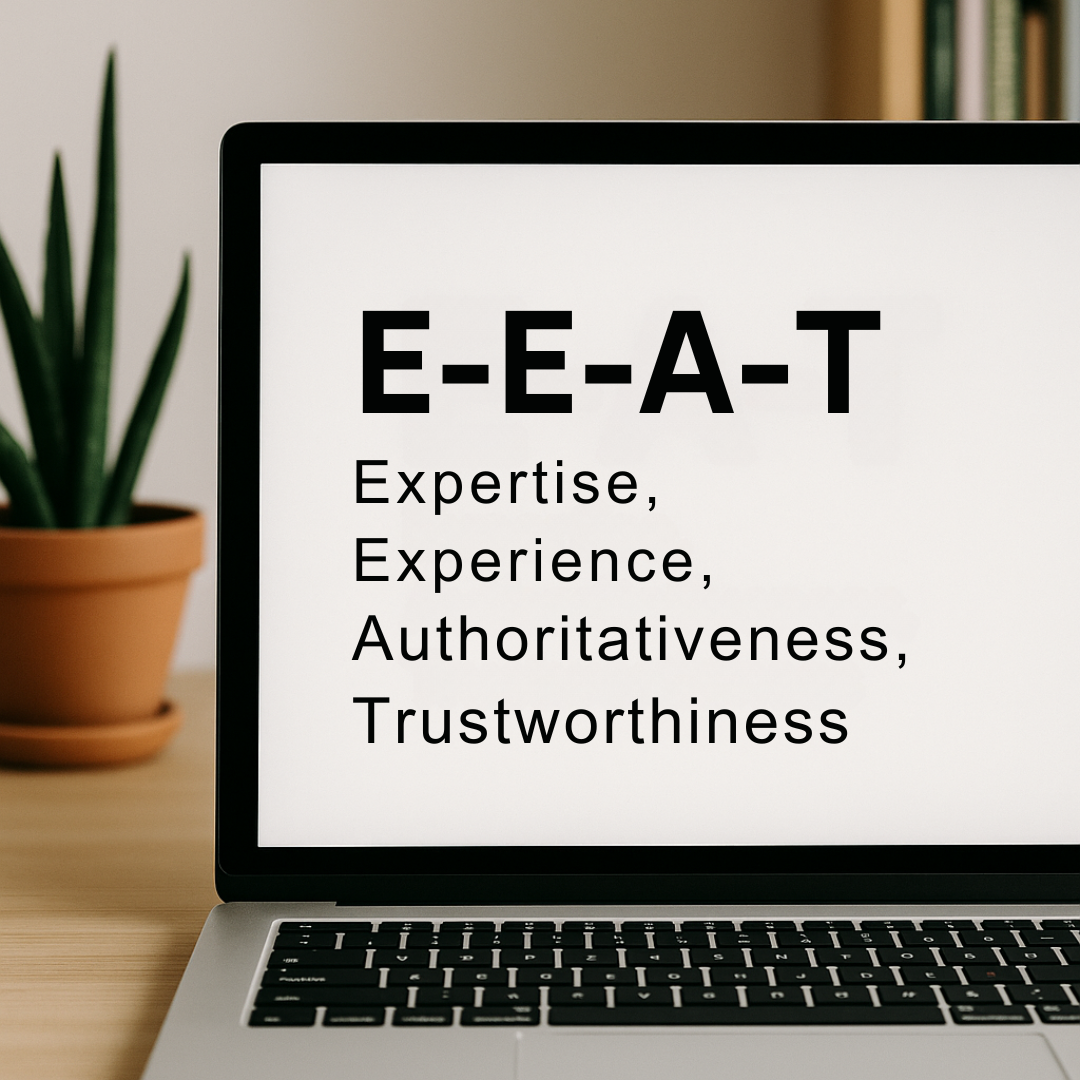
Google’s quality raters are specifically looking for content that demonstrates first-hand experience with products, services, or topics. This is particularly important for small businesses in the “Your Money or Your Life” (YMYL) categories like health, finance, and safety.
What does this mean for your small business? Share your real experiences. Include case studies from your actual clients. Post photos of your team working on projects. Have your most experienced team members author content. These authentic touches signal to Google that real experts with genuine experience are behind your content.
And honestly, your potential customers can tell the difference too. When you write from experience rather than just research, it shows—and both Google and your audience will reward you for it. Understanding the new E in E-E-A-T has become essential for anyone serious about their search rankings.
To boost your E-E-A-T signals, document your actual processes and share specific results with real numbers whenever possible, while making sure to include author bios with relevant credentials for all your content creators.
Create a dedicated “Our Process” or “Case Studies” section on your website that includes dated, detailed examples of your work with measurable outcomes.
Trend #3: Core Web Vitals 2.0
If you thought Core Web Vitals were just a passing fad, think again. Google has doubled down on these technical performance metrics, expanding them to include new measurements that reflect how real users experience your site.
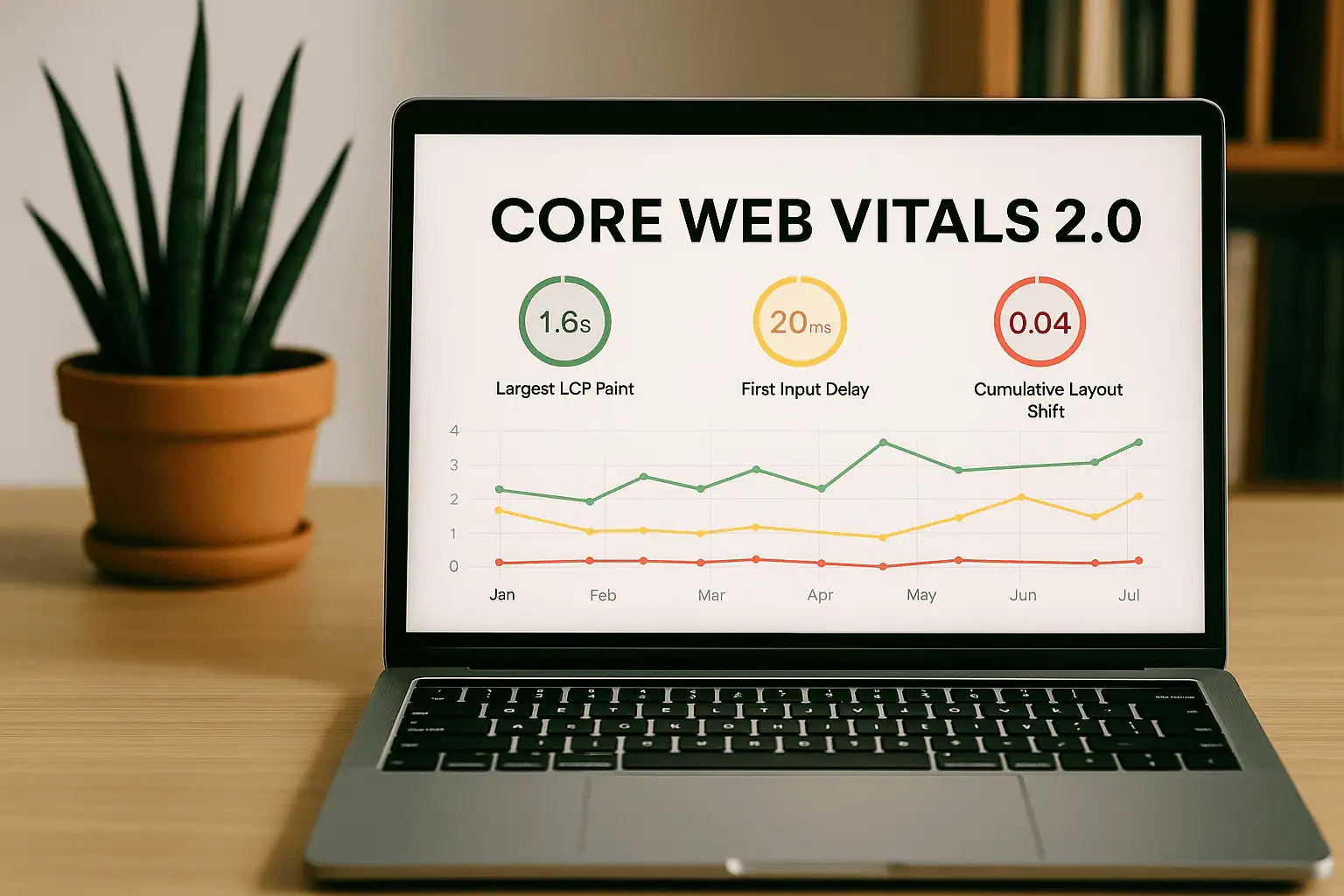
The original trio of Largest Contentful Paint (LCP), First Input Delay (FID), and Cumulative Layout Shift (CLS) has been joined by more nuanced metrics like Interaction to Next Paint (INP) for web performance SEO and Time to First Byte (TTFB). This evolution was further emphasized in the Google 2024 March core update, which put even more emphasis on technical performance.
For small businesses, this means your website’s technical performance matters more than ever. The good news? Many website builders and hosting services now offer built-in optimization tools, so you don’t need to be a developer to score well on these metrics.
Simple steps like compressing images, using a content delivery network (CDN), and choosing a responsive theme can dramatically improve your scores—and your rankings.
Take action today by running your site through Google’s PageSpeed Insights tool and address the three biggest issues it identifies, focusing first on image optimization which typically offers the quickest performance gains for most small business sites.
Set a calendar reminder to check your Core Web Vitals every quarter, as they can silently degrade when you add new content or features to your website.
Trend #4: Zero-Click Search Optimization
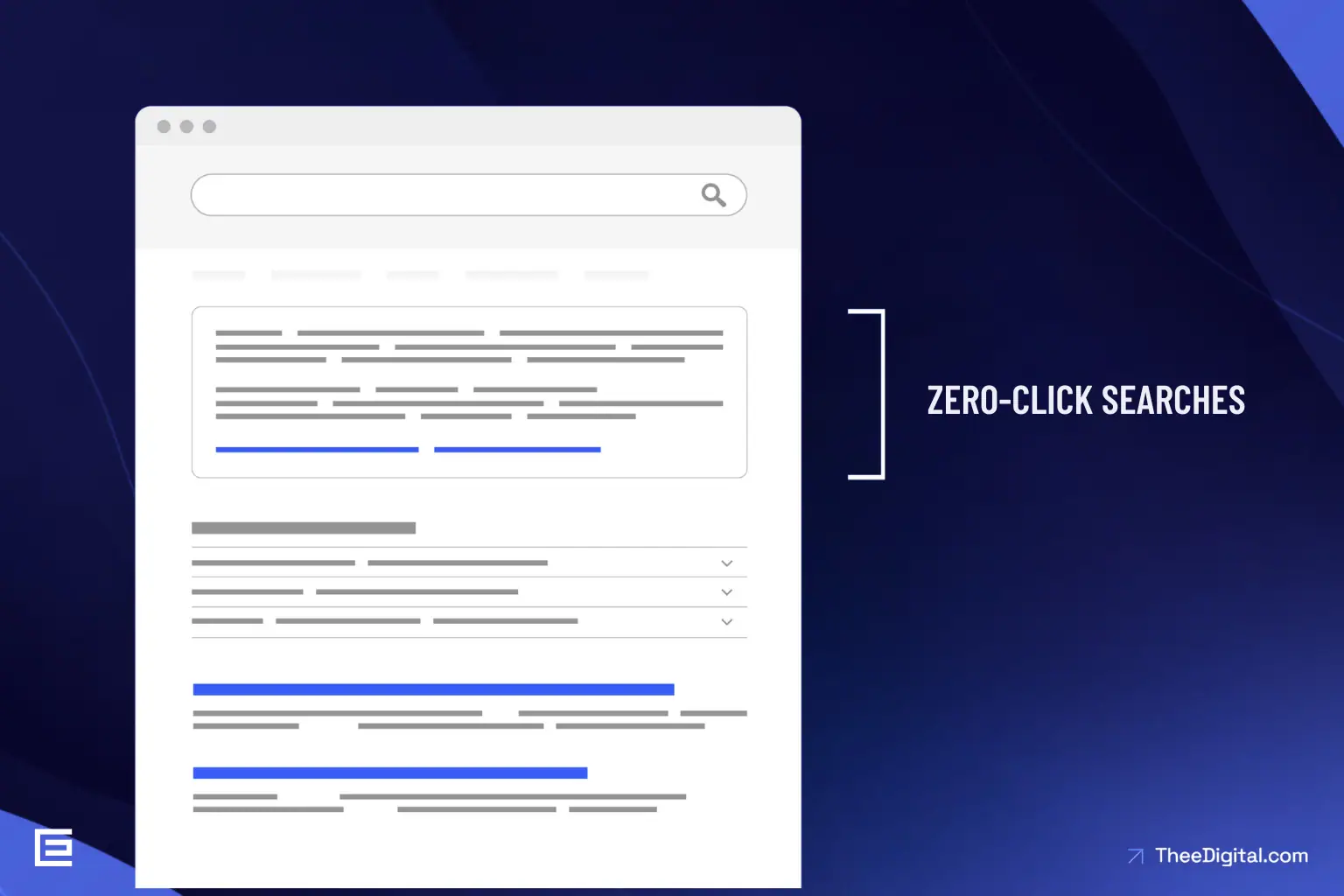
Here’s a trend that might seem counterintuitive: optimizing for zero-click searches that don’t result in clicks to your website. With Google displaying more information directly in search results through featured snippets, knowledge panels, and other SERP features, many searches now end right on the search results page.
For small businesses, this means thinking beyond traditional organic search traffic metrics. Instead of just trying to get clicks, focus on getting your brand and key information visible in these prominent positions to build authority.
Structure your content to directly answer common questions in your field. Use clear, concise language that search engines can easily extract as answers to conversational, full-sentence queries. For local businesses, make sure your Google Business Profile is completely filled out with up-to-date hours, services, and FAQs.
Remember, even if users don’t click through to your site, seeing your brand repeatedly in position zero builds awareness and credibility that can improve your digital marketing performance later on. This strategic approach to zero-click searches is becoming an essential part of any comprehensive online marketing strategy.
Start capturing zero-click searches by creating a list of your top 20 customer questions and writing direct, concise answers in the first paragraph of each relevant page, using question-based subheadings and implementing FAQ schema markup to maximize your chances of appearing in featured snippets.
Create a dedicated FAQ page that groups related questions together, as Google often pulls multiple related featured snippets from the same authoritative source.
Trend #5: Voice Search and Conversational AI
“Hey Siri, where’s the closest coffee shop that serves oat milk lattes?”
Voice searches continue to rise in 2025, with more natural, conversational queries becoming the norm. Small businesses that optimize for how people actually talk—rather than how they type—are seeing significant advantages in local and mobile search results.
The key difference? Voice searches tend to be longer, more question-based, and more conversational than typed searches. They also frequently include words like “near me,” “open now,” or “how do I get to?”

To capitalize on this trend, create content that answers specific questions your customers might ask. Update your local business listings with conversational descriptions of your services. And consider creating an FAQ page that mirrors the natural language people use when speaking to their devices.
To optimize for voice search, record how customers actually ask questions when they call your business, then use those exact phrases in your content, while ensuring your Google Business Profile is completely filled out with conversational service descriptions.
Add a “How to find us” section to your website using natural directions like “We’re across from the main post office” rather than just an address, as this matches how voice searchers navigate.
Trend #6: Video Content Dominance
This may shock you: In 2025, video content isn’t just important for SEO—it’s absolutely essential. Google has significantly expanded video indexing and is now showing more video results for many queries where text used to dominate. Following the latest digital marketing trends, video has become a non-negotiable element in your content mix.

What’s more, with the rise of video search engines like YouTube becoming increasingly integrated with traditional search, businesses without video content are missing a massive opportunity.
The barrier to entry has dropped dramatically. You don’t need Hollywood production values—authentic, helpful videos shot on a smartphone can perform extremely well. Focus on answering customer questions, demonstrating products, or sharing quick tips related to your industry.
Don’t forget to optimize your videos by:
- Including your target keywords in the title, description, and as tags
- Adding closed captions and transcripts
- Creating compelling thumbnails
- Breaking longer videos into shorter, topic-focused segments
Even a simple “how-to” video related to your products or services can rank well and drive qualified traffic to your business.
Jumpstart your video strategy by creating a simple how-to video addressing your most frequently asked customer question, making sure to include keyword-rich transcripts and organizing your videos into topic-specific playlists to create content clusters on YouTube.
When creating videos, state the main question and answer in the first 30 seconds to improve retention and increase your chances of being featured in Google’s video snippets.
Trend #7: Topic Clusters Over Keywords

The days of creating one-off pages targeting individual keywords are fading fast. In 2025, Google’s understanding of semantic relationships between topics means that comprehensive coverage of subject areas yields better results than keyword-focused content.
Smart small businesses are restructuring their websites around topic clusters—a pillar page that broadly covers a main topic, linked to multiple related content pieces that explore subtopics in depth.
This strategy accomplishes two things: it signals to Google that your site has comprehensive expertise in your field, and it creates a better user experience by guiding visitors to related content they’ll find valuable.
For example, if you run a garden supply store, instead of creating separate unconnected pages for “vegetable seeds,” “garden soil,” and “plant fertilizer,” create a comprehensive pillar page about “vegetable gardening for beginners” that links to in-depth pages on each of those subtopics.
Implement topic clusters by selecting your three most valuable business services or products, creating a comprehensive pillar page for each one, and then developing at least five in-depth subtopic pages that link back to the pillar and to each other.
Use consistent navigational elements to explicitly show the relationship between your pillar and cluster content, helping both users and search engines understand your site architecture.
Trend #8: Privacy-First SEO Trends 2025 Strategies
With third-party cookies becoming extinct and privacy regulations tightening worldwide, the way we track and target users has fundamentally changed. Smart businesses are pivoting to privacy-compliant SEO strategies that don’t rely on invasive tracking.

First-party data—information users willingly share with you—has become gold. Building direct relationships with your audience through newsletters, loyalty programs, and account creation gives you valuable data for personalization while respecting privacy.
For small businesses, this shift actually presents an opportunity. By focusing on creating genuine value rather than tricks to track them, you build trust with both users and search engines. Transparent privacy policies, clear consent mechanisms, and honest communication about data usage are now ranking factors themselves.
Prepare for the cookieless future by creating value-driven lead magnets like guides or calculators that encourage visitors to willingly share their information, while implementing transparent privacy notices and building a first-party data strategy focused on direct relationships with your audience.
Create a free tool on your website that provides immediate value in exchange for basic information, giving you ethical first-party data while demonstrating your expertise.
Trend #9: Hyperlocal Content Marketing

For small businesses with physical locations, hyperlocal content has become an absolute game-changer. Going beyond generic “near me” optimization, successful local businesses are creating content specifically tailored to their immediate geographic areas.
This means mentioning local landmarks, events, neighborhood names, and even local slang or cultural references. Google’s local search algorithms have become sophisticated enough to recognize and reward truly local content versus generic content with a city name thrown in.
A restaurant might create content about “Where to Eat Before the Art Walk in Midtown” rather than just “Best Restaurant in [City].” A hardware store could publish “Spring Lawn Care Tips for [Specific Neighborhood]’s Clay Soil” instead of generic gardening advice.
These hyperlocal signals help Google connect searchers with the most relevant local businesses—and help those businesses stand out in crowded markets. To take this further, learn how to optimize Google Business Profile for more leads by enhancing your local presence.
Boost your local relevance by creating a series of neighborhood-specific guides related to your products or services, incorporating local landmarks and street names naturally in your content, and establishing partnerships with nearby businesses for local link building and co-marketing opportunities.
Create a custom Google Map embedded on your site that highlights your business alongside complementary local businesses and attractions, strengthening your local relevance signals.
Trend #10: Advanced Schema Markup Implementation
Schema markup—the code that helps search engines understand the context of your content—has evolved far beyond basic implementation. In 2025, businesses that use advanced, specific schema types are gaining significant advantages in search visibility.
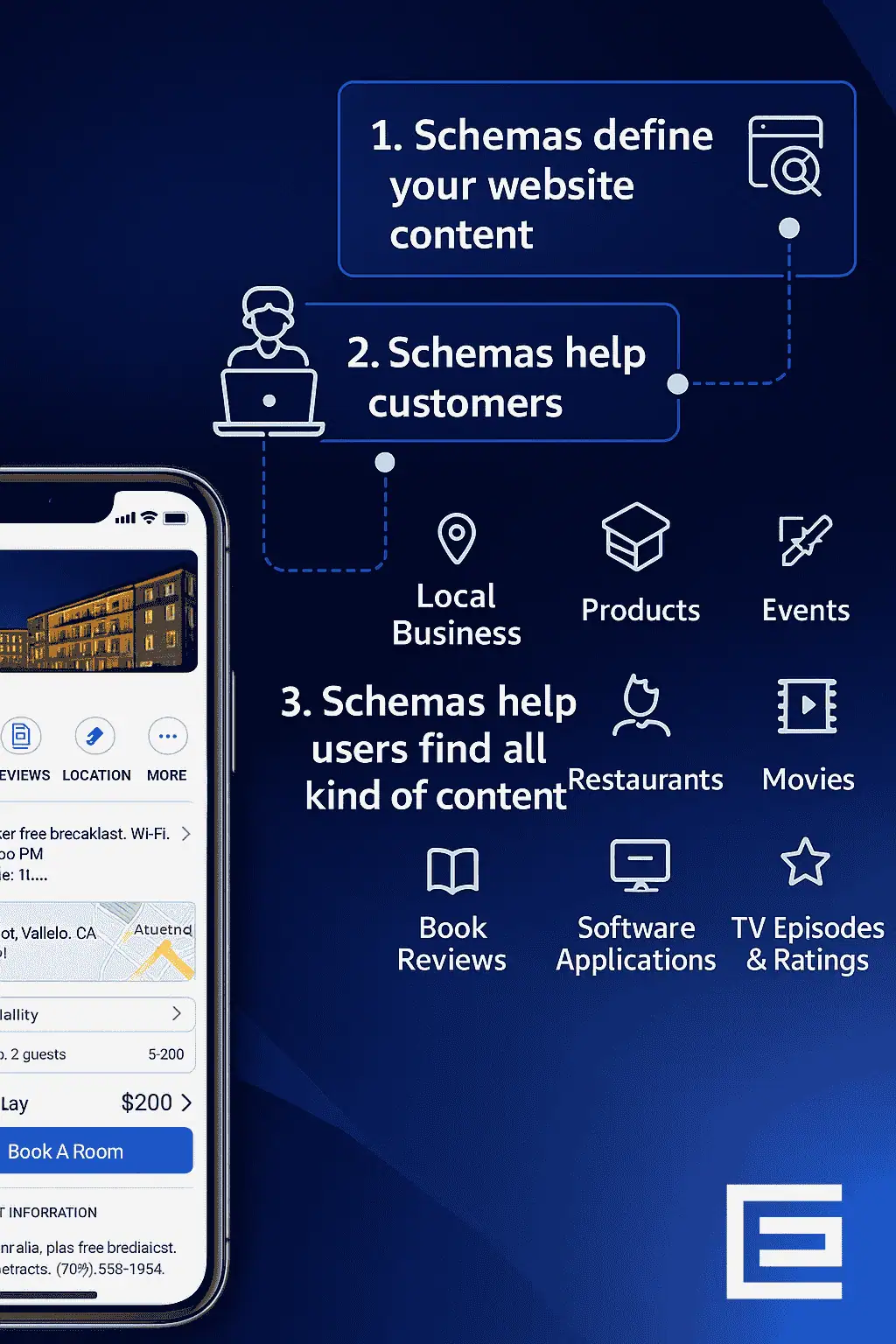
For small businesses, this means going beyond just adding organization or local business schema. Consider implementing:
- FAQ schema for common customer questions
- How-To schema for tutorial content
- Product schema with detailed specifications
- Event schema for workshops or sales
- Review schema to highlight customer feedback
The good news is that many website platforms now offer simple tools to implement schema without coding knowledge. This technical SEO tactic delivers outsized benefits, making your search listings more visually appealing and informative, which naturally leads to higher click-through rates.
Start with schema markup by identifying your three most valuable content types (products, services, events, etc.), implementing the corresponding schema type for each, and ensuring you include all optional properties within each schema to provide maximum context to search engines.
Use Google’s Rich Results Test tool before and after implementing schema to verify it’s working properly and to see exactly how your content will appear in search results..
Trend #11: Mobile-First Indexing Evolution
Mobile-first indexing isn’t new, but its importance continues to grow in 2025. What is new is how Google evaluates mobile experiences, looking beyond just responsive design to assess true mobile usability.
For small businesses, this means ensuring your mobile site isn’t just a shrunken version of your desktop site. Mobile users have different needs and behaviors—they’re often looking for quick information, directions, or contact details rather than in-depth content.
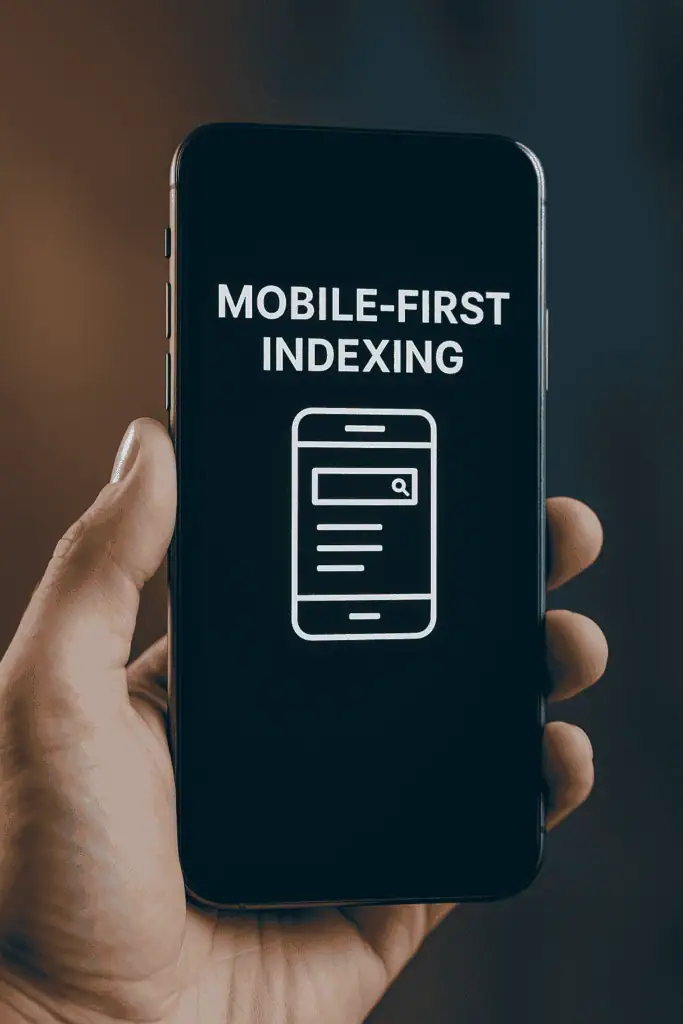
Successful mobile optimization now includes:
- Thumb-friendly navigation with larger touch targets
- Simplified forms with minimal typing required
- Click-to-call buttons prominently displayed
- Location-aware features that activate based on user proximity
- Fast-loading pages optimized for cellular connections
Google is increasingly penalizing sites that offer subpar mobile experiences, so this isn’t an area where small businesses can afford to cut corners.
Transform your mobile experience by conducting a mobile usability audit using your actual smartphone (not just responsive testing tools), prioritizing key conversion elements like phone numbers and forms for mobile optimization, and implementing accelerated mobile pages for your most important content.
Create a “mobile-first checklist” for all new content, ensuring thumb-friendly navigation and simplified layouts are considered before publishing anything new.
Trend #12: Visual Search Optimization
“What’s that plant called?” snap “Where can I buy that chair?” snap

Visual search—using images rather than text to find information—has come into its own in 2025. Google Lens, Pinterest Lens, and other visual search tools have become mainstream, changing how people discover products and services.
For small businesses, especially those with physical products, visual search optimization offers a new avenue to reach customers. This means:
- Using high-quality, clear images from multiple angles
- Adding detailed alt text that describes images comprehensively
- Ensuring product images are indexed properly
- Creating visual content that stands out from competitors
- Using consistent visual branding across platforms
Visual search is particularly powerful for retail, home services, fashion, and design businesses, where the visual appeal of products or results is a key selling point.
Optimize for visual search by creating a photo guide to your products or services with multiple angles and uses, writing comprehensive alt text that describes both the visual elements and the purpose of each image, and ensuring your product photography is consistent in style and background across your website.
Include your brand logo or watermark subtly in the corner of all product images so when they appear in visual search results, users still see your brand even before clicking.
Trend #13: Predictive Search Intent Optimization

Search engines are getting scary good at predicting what users really want—even when their queries are vague or ambiguous. For SEO trends in 2025, successful SEO means optimizing not just for keywords, but for the underlying intent behind those keywords.
This requires looking beyond the words people use to understand what problem they’re trying to solve. For example, someone searching “fix leaky faucet” isn’t just looking for information—they likely need a plumber, parts, or detailed step-by-step instructions.
Small businesses that structure their content to address multiple potential intents are seeing higher engagement rates and conversions. This might mean creating content that includes:
- DIY solutions for budget-conscious searchers
- Product recommendations for those looking to purchase
- Service information for those seeking professional help
- Videos for visual learners
- Quick answers for simple questions
By covering different intent possibilities within a single piece of content, you increase the chances of satisfying what the user really wants—which is exactly what Google aims to do.
Enhance your content for multiple user intents by creating hybrid content formats that include both quick answers at the top for information seekers and detailed solutions further down for in-depth researchers, while incorporating multiple content types (text, video, infographics) to satisfy different learning preferences.
Structure your most important pages with clearly labeled sections for “Quick Fix,” “DIY Solution,” and “Professional Help” to directly address the three most common user intents for service-based businesses.
Trend #14: User Behavior Signals as Ranking Factors
Google continues to refine how it uses actual user behavior to determine rankings. Metrics like click-through rate, dwell time (how long someone stays on your page), bounce rate, and scroll depth have become increasingly important signals of content quality.
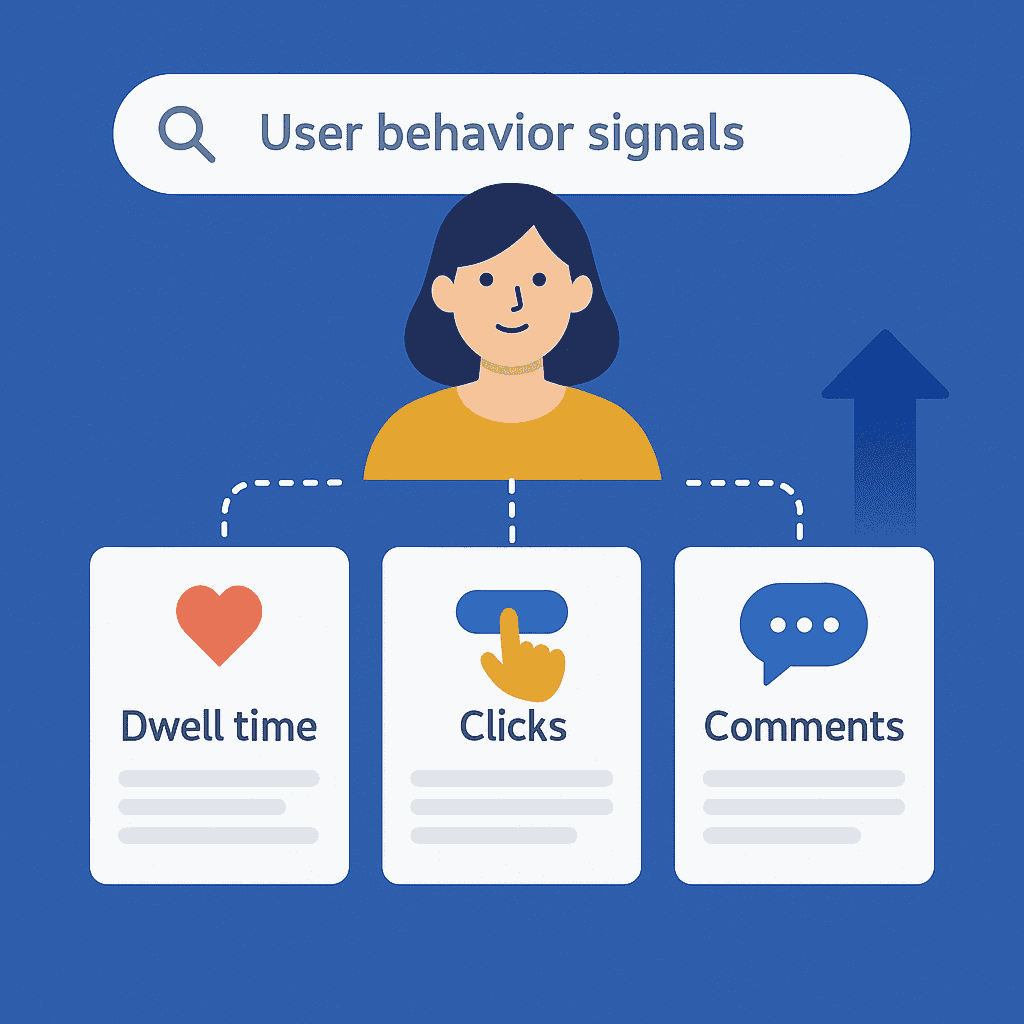
For small businesses, this means focusing not just on getting traffic, but on what happens after users land on your site. Content that genuinely answers user questions and keeps them engaged sends positive signals back to Google.
Some effective strategies include:
- Creating truly comprehensive content that answers related questions
- Using engaging multimedia elements to increase time on page
- Ensuring clear navigation paths to relevant content
- Optimizing page layout for readability and engagement
- Reducing distractions that might cause premature exits
Remember, Google’s ultimate goal is to send users to content that satisfies their needs. When your content does that job well, rankings naturally follow.
Improve your user behavior metrics by conducting a heat map analysis of your top landing pages to see where users are clicking and scrolling, restructuring content to place the most valuable information in those high-engagement zones, and adding internal links to relevant content at precisely the points where users typically exit your pages.
Create a “content journey map” for each main topic on your site, ensuring users always have a logical next step that keeps them engaged with your content ecosystem.
Trend #15: Progressive Web Apps (PWAs) Integration
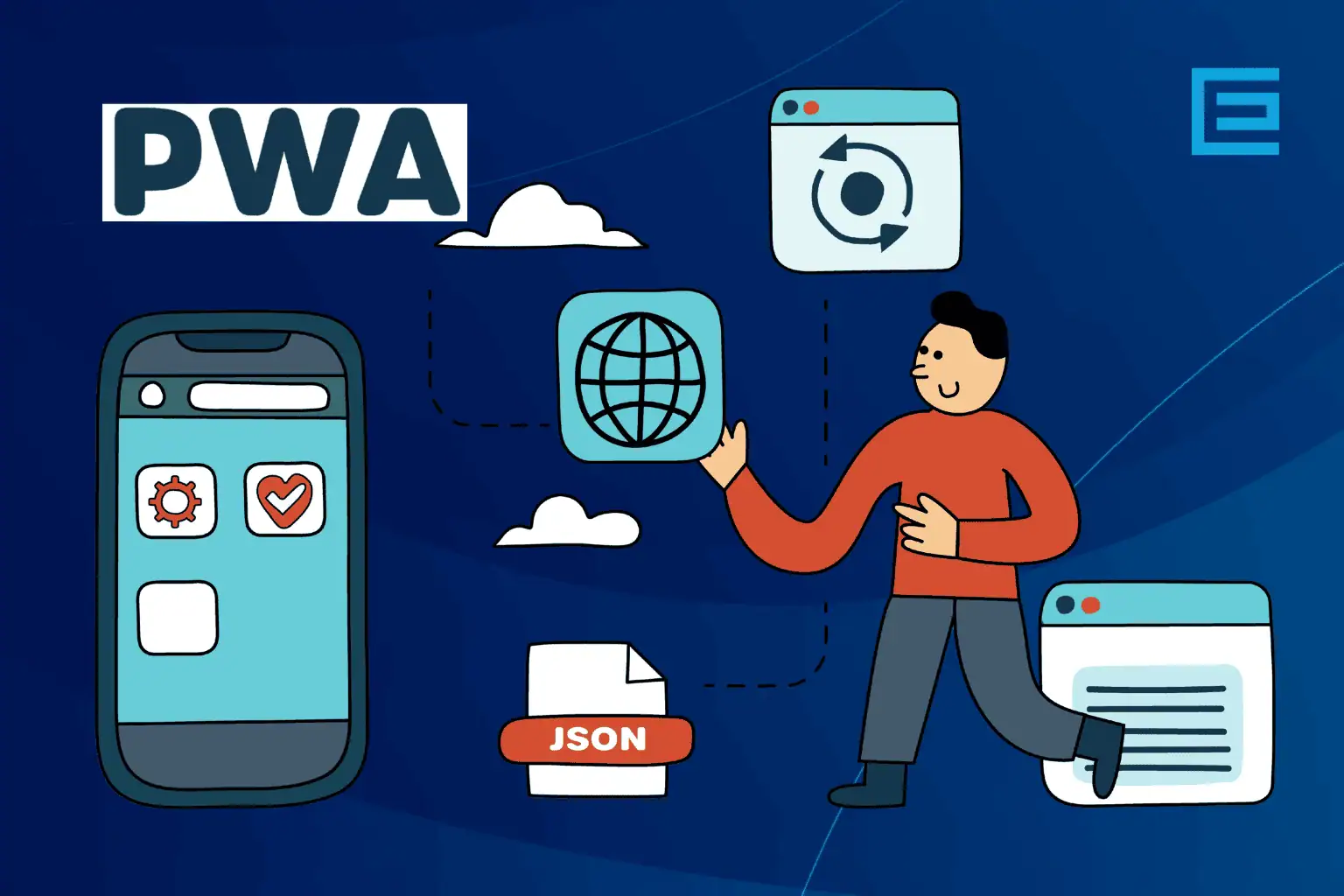
Progressive Web Apps—websites that function like native mobile apps—are providing significant SEO advantages in 2025. These fast, reliable, and engaging experiences combine the best of websites and mobile applications.
For small businesses, PWAs offer particularly compelling benefits:
- Faster loading times, even on slow connections
- Offline functionality
- App-like navigation and features
- Push notification capabilities
- Lower development costs than native apps
Search engines are rewarding PWAs with better rankings because they provide superior user experiences. While implementing a full PWA might be resource-intensive for some small businesses, adding PWA features incrementally can still provide ranking benefits.
Even simple PWA elements like service workers for offline caching or add-to-home-screen functionality can improve user experience metrics that positively impact SEO.
Start incorporating PWA features by implementing service workers for offline caching of your most important pages, adding an app manifest to enable the “add to home screen” functionality, and optimizing for instant loading of critical content paths that your customers use most frequently.
Begin with a PWA “lite” approach by implementing offline caching for your location, hours, and contact information—the exact data mobile users need most when connectivity is spotty.
Trend #16: Alternative Search Engine Optimization
While Google still dominates the search market, alternative search engines have gained significant traction for SEO trends in 2025. Platforms like Bing, DuckDuckGo, Brave Search, and vertical search engines specific to certain industries are capturing more market share—and smart businesses are taking notice.

The interesting thing? These alternative engines often use different ranking factors than Google. DuckDuckGo emphasizes privacy and doesn’t personalize results based on user data. Bing often gives more weight to social signals. Vertical search engines prioritize industry-specific factors.
For small businesses, this diversification presents an opportunity. Doing well on multiple search engine rankings can provide more stable traffic than relying solely on Google. Basic strategies include:
- Submitting your site to alternative search engine indexes
- Optimizing meta descriptions and titles for different search engine preferences
- Using Bing Webmaster Tools alongside Google Search Console
- Ensuring your privacy policies align with privacy-focused search engines
With relatively little extra effort, you can capture traffic from these growing alternative sources.
Diversify your search visibility by spending one hour setting up and verifying your business with Bing Webmaster Tools, optimizing your site’s privacy policy and cookie consent mechanisms to appeal to privacy-focused search engines, and researching industry-specific vertical search engines where your target audience might be searching.
Create a separate tracking system for non-Google search traffic to identify which alternative search engines are most valuable for your specific business niche.
Trend #17: Blockchain Verification for Content Authenticity

Here’s a cutting-edge trend: blockchain technology is beginning to influence SEO through content verification and authenticity tracking. With misinformation concerns at an all-time high, search engines are starting to give preference to content with verifiable authorship and edit history.
For small businesses, blockchain verification offers a way to demonstrate the authenticity and trustworthiness of their content. Early adopters are using blockchain to timestamp original content publication, create verifiable edit histories, and prove authorship conclusively.
While still emerging, this trend aligns perfectly with Google’s emphasis on E-E-A-T, particularly the trustworthiness component. Small businesses that can verify their content’s authenticity may soon have an edge in competitive niches.
Explore blockchain verification by implementing a digital signature on your most valuable content pieces, creating a transparent edit log for frequently updated pages like pricing or service information, and considering a content timestamping service to prove your publication dates conclusively.
Start with verifying your highest-value evergreen content first, particularly pieces that address YMYL (Your Money, Your Life) topics where trust signals carry the most weight.
Trend #18: First-Party Data Collection and Utilization

As third-party tracking continues to crumble under privacy regulations, first-party data—information users willingly share directly with you—has become essential for personalization and targeting.
Forward-thinking small businesses are creating valuable reasons for users to share their data voluntarily through interactive tools that provide personalized recommendations, premium content access requiring simple registration, and loyalty programs with tangible benefits.
This first-party data helps create more relevant, personalized content that naturally performs better in search by more precisely matching user needs and interests. The key is transparency—being clear about what data you’re collecting and how you’ll use it builds the trust that’s increasingly central to success for SEO trends in 2025.
Build your first-party data strategy by creating an interactive assessment tool related to your products or services that provides personalized recommendations, establishing a value-first email newsletter focused on solving customer problems rather than selling, and implementing progressive profiling to collect additional user data gradually.
Develop a “content access exchange” where users receive increasingly valuable content in exchange for providing more detailed information about their specific needs and challenges.
Trend #19: Augmented Reality: SEO Trends 2025

Augmented reality (AR) features are no longer just for gaming or social media filters. They’ve become valuable tools for businesses—and search engines are taking notice. SEO trends in 2025, content with AR components will receive preferential treatment in certain search categories.
For small businesses, particularly those selling physical products or services, simple AR implementations can provide significant advantages through virtual “try before you buy” experiences, visualization tools for home services or improvements, and interactive demonstrations of complex products.
As smartphones have made AR accessible to almost everyone, the barrier to entry has dropped dramatically. Even basic AR implementations can help differentiate your content and improve user engagement metrics that influence rankings.
Start incorporating AR elements by using web-based AR platforms that don’t require app downloads, creating simple product visualization experiences that help customers see items in their own space, and adding AR-viewable information to your physical location or products using QR codes.
Begin with just one flagship product or service offering an AR experience, then prominently feature this interactive element on your homepage to boost overall engagement metrics.
Trend #20: Inclusive and Accessible Content Design
Accessibility has evolved from a legal requirement to a crucial SEO factor. Google now rewards sites that provide truly inclusive experiences for all users, including those with disabilities.
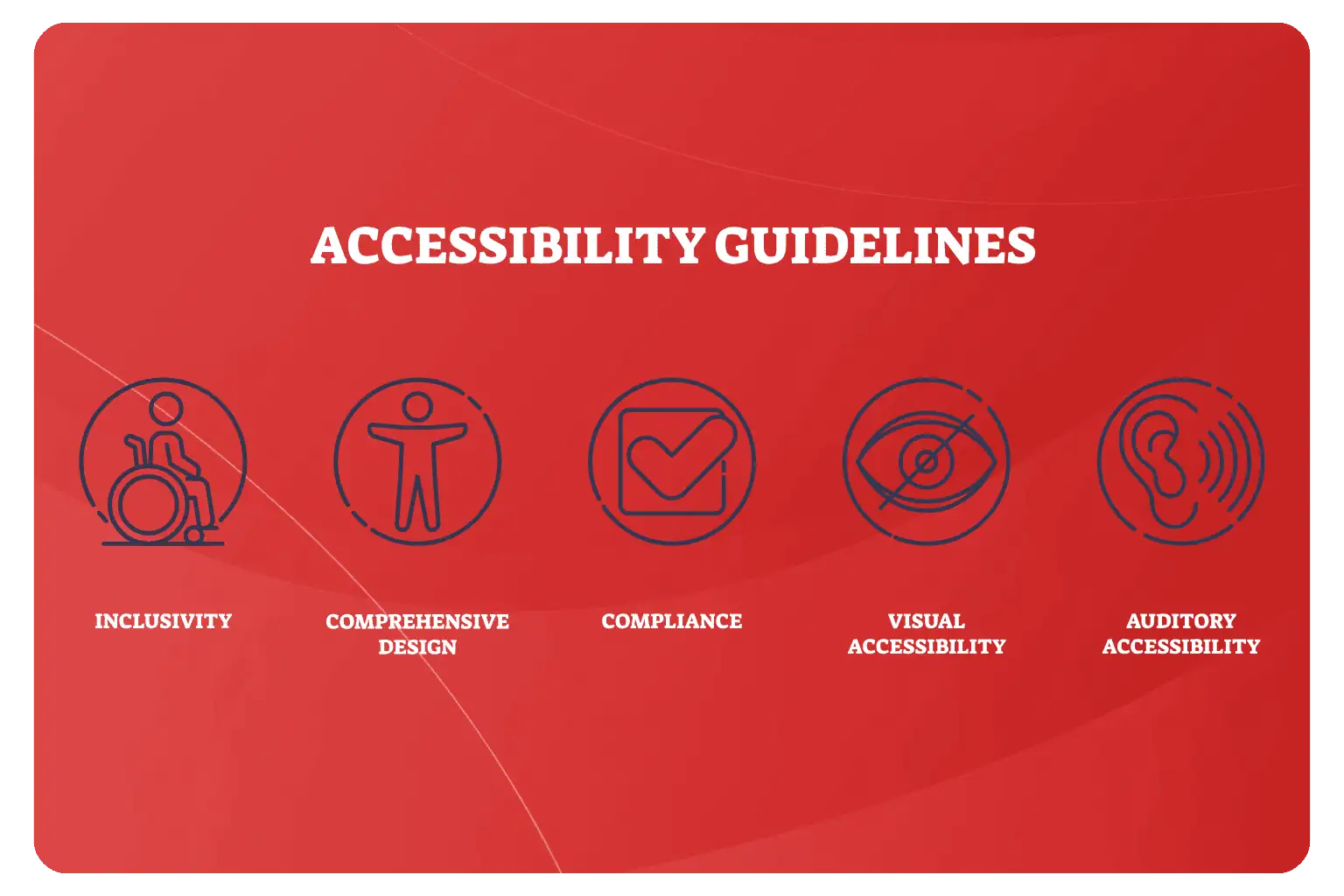
For small businesses, making your content accessible isn’t just the right thing to do—it’s also good for SEO in 2025. Key accessibility improvements include proper heading structure for screen readers, alt text for all images, sufficient color contrast for readability, and captions and transcripts for video content.
These accessibility improvements also tend to create better experiences for all users, improving engagement metrics that positively impact rankings.
Make your content more accessible by running your website through an accessibility checker tool to identify critical issues, ensuring all videos include accurate captions or transcripts, and reviewing your site’s color contrast ratios to ensure text is readable for visitors with visual impairments.
Create an accessibility statement page that outlines your commitment to inclusive design and provides alternative contact methods for users who may struggle with standard forms or navigation.
Trend #21: Automated Technical SEO Auditing

Technical SEO has become too complex for manual monitoring alone. In 2025, automated auditing tools have become essential for maintaining good technical health—and the small businesses using them have a clear advantage.
These tools continuously monitor for issues like broken links and 404 errors, crawl errors and indexing problems, mobile usability issues, page speed problems, and schema markup errors. For small businesses with limited technical resources, these automated tools provide enterprise-level monitoring at affordable prices.
With technical factors weighing more heavily in rankings, these tools help ensure your site maintains a solid foundation for other SEO efforts to build upon.
Implement automated SEO monitoring by setting up a weekly technical audit using one of the many affordable tools available, establishing custom alerts for critical issues like broken pages or crawl errors, and creating a prioritization framework that helps you address high-impact issues first.
Schedule a monthly “technical SEO maintenance day” where you address the top three issues identified by your auditing tool, gradually improving your site’s foundation rather than attempting to fix everything at once.
Trend #22: Integrated Cross-Channel SEO Strategy: Seo Trends 2025
The final SEO trend in 2025 is the blurring of lines between channels. Search engines now consider signals from social media, video platforms, podcasts, and other digital channels when ranking content.
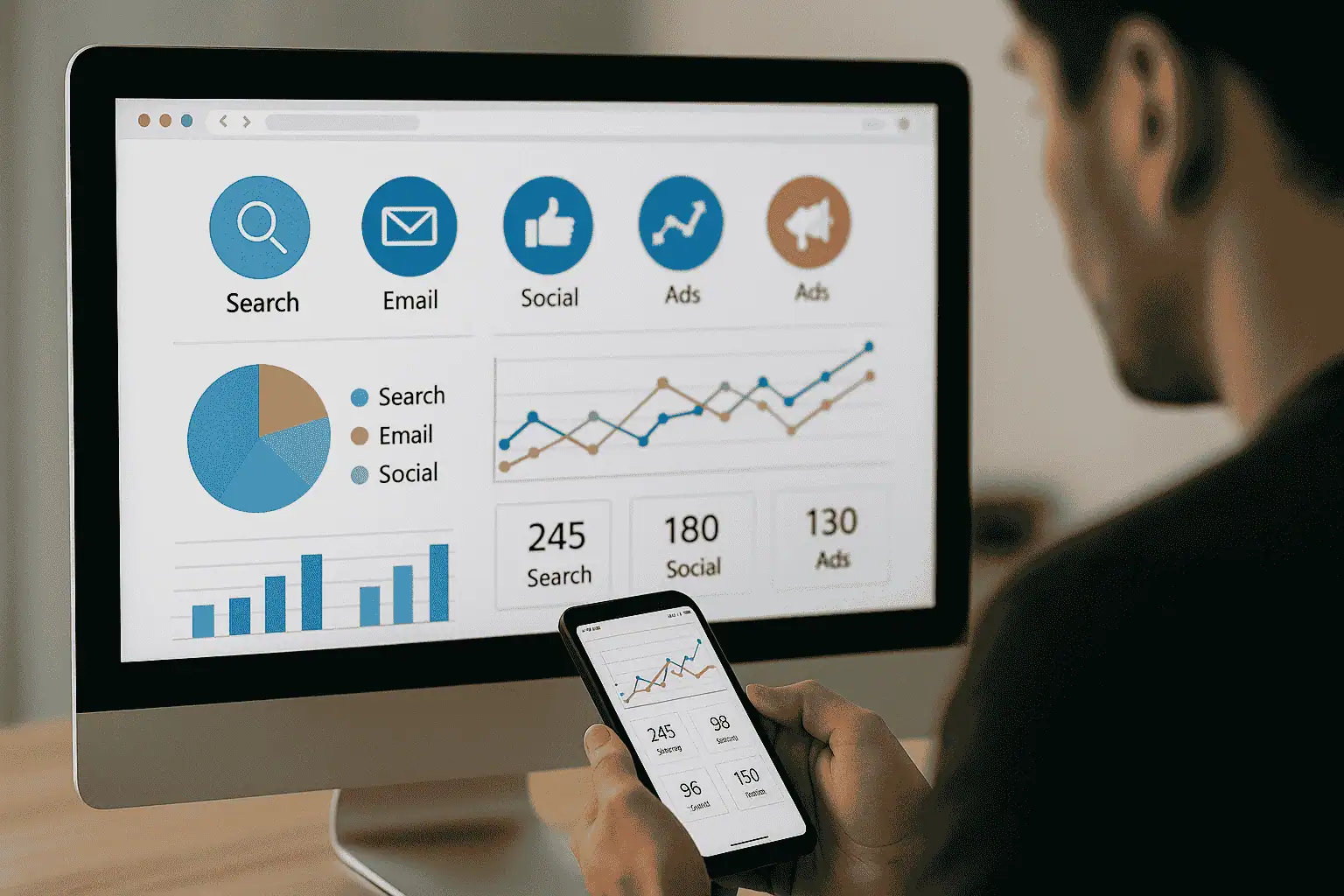
Small businesses succeeding in SEO trends in 2025 are taking an integrated approach, ensuring consistent messaging and cross-promotion across website content, social media posts, YouTube videos, and guest content on other platforms. This integration creates a coherent digital footprint that strengthens your authority in Google’s eyes.
Rather than treating each channel as separate, successful businesses are creating content ecosystems where each piece reinforces the others. For example, a popular video on YouTube can boost the ranking of a related blog post, while social shares can accelerate the indexing and initial ranking of new content.
Create a truly integrated approach by developing a content repurposing workflow that transforms each piece of original content into multiple formats for different platforms, establishing consistent brand signals across all digital touchpoints, and implementing strategic cross-linking between your various web properties.
Create a “hub and spoke” content calendar where each major topic (hub) spawns related content pieces (spokes) across different platforms, all linking back to your definitive resource on your main website.
How to Implement These SEO Trends 2025 for Your Small Business

Now that we’ve covered the 22 SEO trends reshaping the future of organic search in 2025, you might be wondering, “Where do I even start?” The good news is that you don’t need to tackle everything at once.
Start by evaluating your current performance metrics and identifying the trends that align most closely with your marketing goals and resources. For most small businesses following this guide, I recommend beginning with:
- A systematic approach through technical SEO audit to identify any foundational issues
- Updating your content strategy to focus on E-E-A-T principles and target keywords
- Enhancing your local SEO with location-based keywords if you have a physical location
- Adding structured data to existing high-potential content early
- Implementing Core Web Vitals improvements to boost user experience
Remember that consistency trumps perfection in SEO strategies. Small, regular content updates will yield better search results than occasional massive overhauls. Evaluate performance by month nine and reinvest initial gains where you see true differentiation.
And if you’re feeling overwhelmed by this OmniSEO™ approach, consider getting expert insights from an SEO consultant for a few hours to help prioritize your efforts based on your specific situation and marketing channels.
Measuring SEO Success: SEO Trends 2025
How do you know if your SEO efforts are working? For SEO trends in 2025, looking beyond simple search rankings is essential. The most valuable performance metrics to track include:
- Organic search traffic growth, especially to high-value pages
- Conversion rates from search queries
- Click-through rates on search listings
- Branded search volume (people searching specifically for your business)
- Local pack appearances for location-based businesses
- Featured snippet captures for zero-click searches
- User experience metrics in Google Search Console
Set up regular marketing review of these metrics—monthly for most small businesses—and look for trends rather than day-to-day fluctuations. SEO is a long game, and sustainable growth over time is more important than quick wins, as Jordan D., Senior Performance Support Operations Lead at an Internet marketing calculator company, often reminds clients.
Tools like Google Search Console, Google Analytics 4, and other search engines’ webmaster tools provide most of these metrics for free, making comprehensive tracking of user behavior accessible even to businesses with limited digital marketing budgets. Prioritize updates based on where users are showing the most engagement with your content.
SEO Trends 2025 and Beyond
The SEO landscape of 2025 offers unprecedented opportunities for small businesses willing to adapt. While the technical aspects have become more complex, many of the core principles remain the same: craft content that provides genuine value for your audience, focus on user experience, and demonstrate your expertise and authority through interactive and utility-based content.
The 22 SEO trends we’ve explored in this comprehensive blog post give you a roadmap for success in these evolving trends in SEO and the search environment. By thoughtfully implementing the strategies most relevant to your business, you can achieve sustainable growth in organic search traffic and qualified leads.
Remember that SEO isn’t about tricking search engines—it’s about genuinely being the best answer to your potential customers’ questions with relevant keywords naturally integrated throughout your content. When you focus on understanding user intent and providing helpful answers first, the search rankings tend to follow.
Need help Implementing These SEO Trends in 2025?
Which of these SEO trends will you implement first in your online marketing strategy? Whatever you choose from this guide, start small with long-tail keywords, measure your results through performance metrics, and build on your successes with regular content updates. Want some help or a free SEO audit? Contact us at 919-341-8901.
FAQs
Absolutely! SEO isn’t just relevant—it’s evolved into something more essential than ever. As organic visibility becomes harder to achieve amid crowded search results, strategic SEO is the differentiator between businesses that thrive online and those that disappear. What’s changed isn’t its importance but its sophistication: combining technical excellence, genuine user value, and multi-platform visibility is now the standard
No—AI is transforming SEO, not replacing it. Instead of eliminating the need for search optimization, AI has become an indispensable partner in the process. While AI tools can analyze data and create initial content drafts at unprecedented speed, human strategic thinking, E-E-A-T signals, and authentic expertise still drive meaningful results. The winners in 2025 are using AI to enhance their SEO efforts, not replace them.
SEO in 2025 is hyper-personalized, technically sophisticated, and experience-focused. Search engine like Google now determines search engine rankings based on how users interact with content, not just what it contains. Voice search, visual recognition, and zero-click optimization have transformed how people find information. The future belongs to businesses that prioritize user experience across all touchpoints while maintaining technical excellence under the hood.
Smart companies are investing more in SEO than ever before, but with drastically different allocation patterns. Instead of pouring resources into manipulative tactics or keyword stuffing, they’re investing in comprehensive digital ecosystems that prioritize authentic expertise, utilizing a industry-specific SEO agency, technical performance, and multi-platform visibility. With organic search getting more competitive, the investment isn’t optional for businesses that want to remain visible online.
Tags: AI • Digital Marketing • Our Favorites • Search Engine Optimization


